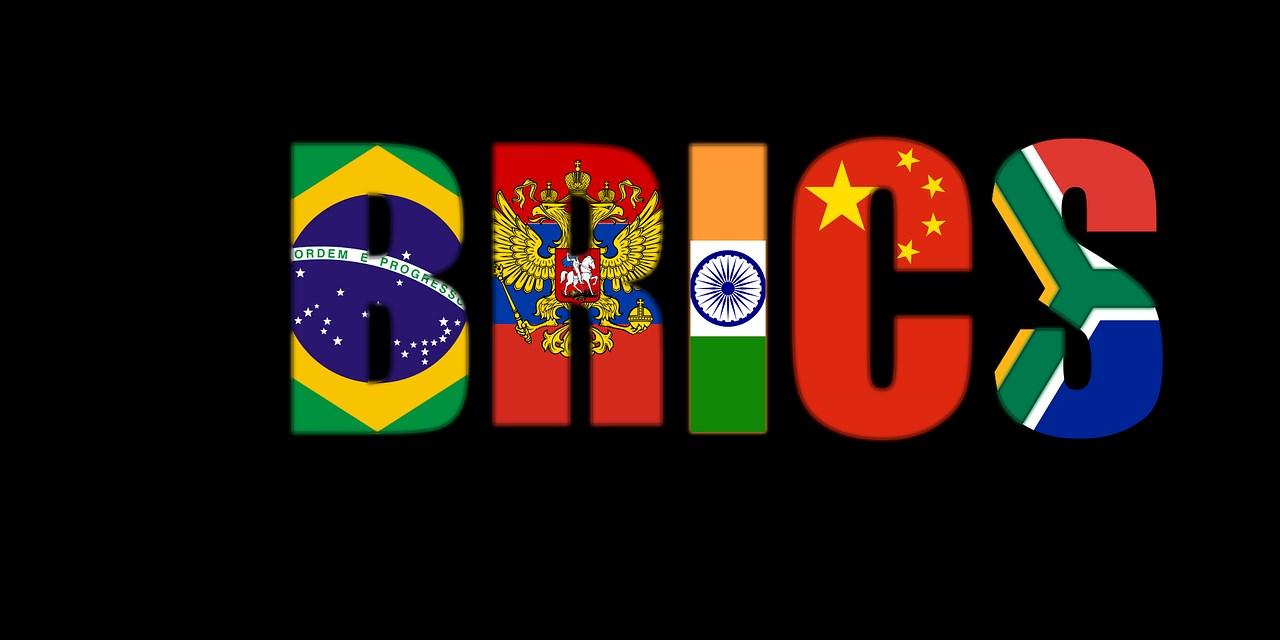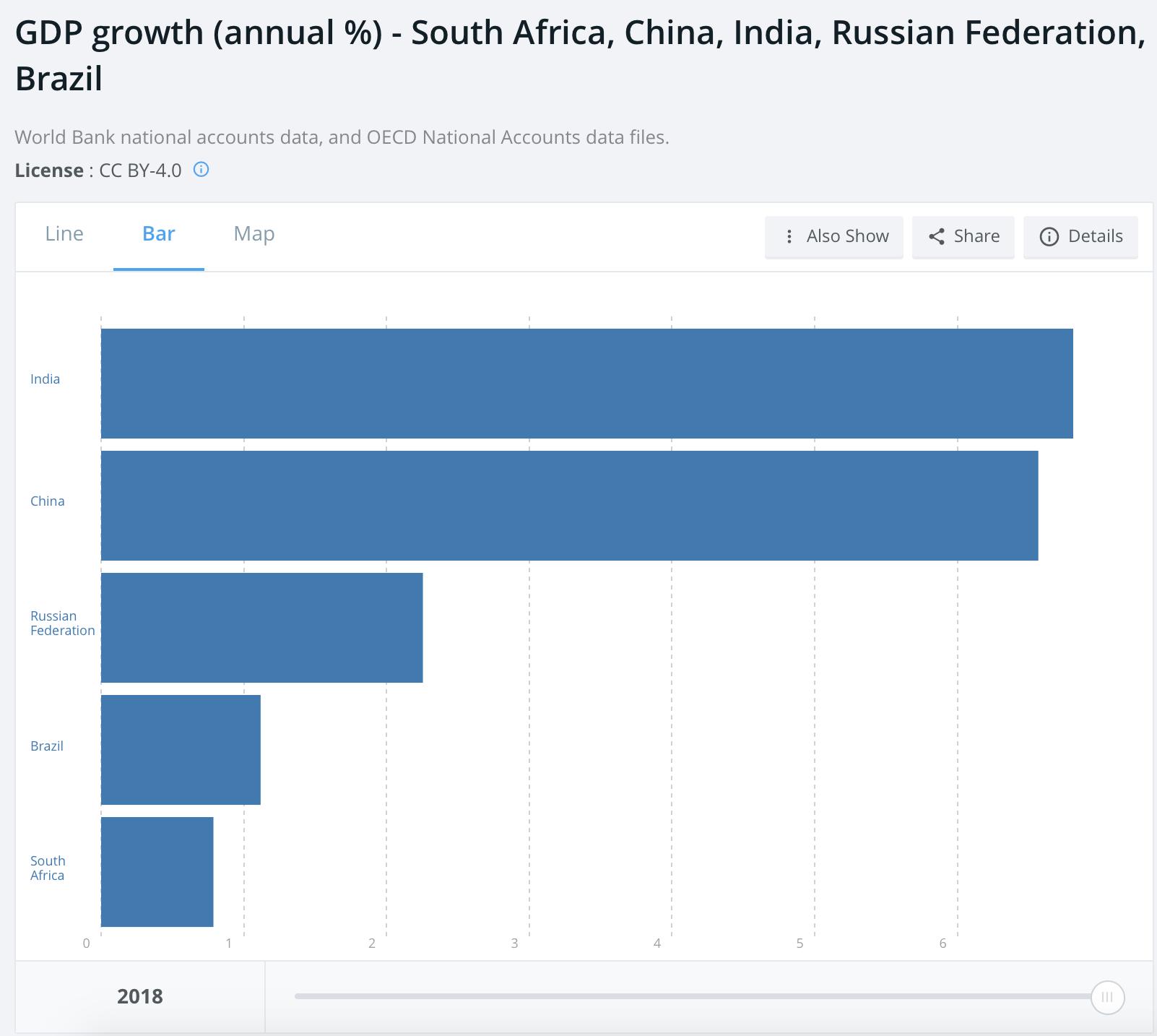
4 minute read
The emergence of an economic powerhouse
from Whitonomics 2020
The increasing economic power of BRICS has the potential of overshadowing Western economies
Waseem Ruhomaun
O’Neill forecasted in 2003 that the original BRIC countries would overtake the US by 2050 to become major economic powers in the world, with higher GDPs than the US. Despite the tariff war, which was initiated by the US against China, India’s struggle against poverty, Brazil’s internal turmoil, and sanctions against
Russia, the BRICS economies are still likely to eclipse the major advanced economies in the early 2030s. By 2030, the six major economies will be about 5 per cent behind the original estimate, and those of the BRICS a bit more, about 7 per cent . Since the 2008-2017 Global The British economist, Jim the global order, where emerging Financial Crisis, the per capita annual O'Neill is credited for coining the countries were playing an increasing- growth rate of GNP at the global levterm BRIC in 2001 in “Building Better ly significant role in global economic el has dropped to an average of only Global Economic BRICs," a paper growth. The BRICS represent these 1.7%. In contrast, the BRICS have written for Goldman Sachs. O’Neill’s fast-growing countries with three been the main drivers of global per aim was to identify the major eco- billion people and a combined GDP capita growth during this crisis perinomic players of the next generation. of sixteen trillion dollars . These od, with an average of 5.4%. According to him, Brazil, Russia, India countries have many things in comand China had the potential to over- mon besides being in the top 15 of According to the New York shadow some of the current major countries with the largest nominal Times, BRICS do not have enough in Western nations in economic GDP, they are moreover amongst the common nor do they enough shared strength over the coming decades. largest countries in the world and goals to function effectively as a The BRICS were born in 2011 when holds more than 40% of the world counterweight to the west. It further South Africa was added to the group. population. BRICS as a group have added that they are deeply divided However, according to O’Neill the seen their share of world GDP in- on some basic issues and they are inclusion of South Africa has some- creased even faster than Jim O'Neill seen as rivals rather than allies in the what weakened the group’s power forecast in 2001, with a significant global economy and have achieved since its economy is too small. The increase from 8% to 23% of the glob- little . This echoes what many expurpose of this essay is to portray al economy . The IMF had projected perts have been claiming in the last the emergence of the BRICS econo- that between the year 2016 and decade that the BRICS member namies and their significance on the 2021, about half of world growth will tions are too different, and have too global stage. be attributed to the BRICS nations. few synergies, to represent a solid The term BRICS was coined by Jim O’Neill as a notion to epitomise the changes that were happening in However, BRICS need recognising that growth between its five nations has not been evenly spread. economic and political power. Due to China’s increasing economic success and significant influence on the global stage, BRICS does not
represent a union of equal members but more like a company with China as its majority shareholder.
Marc Chandler, noted that much of the heavy lifting has been done by China and India but notably China where the pace of development has been particularly breathtaking. Growth rates in Brazil, Russia and South Africa have been far less impressive. According to Bharadwaj (2006, 52), the BRICS nations need to face internal weaknesses and various other implications for them to be able to seize their full potential. From Brazil’s political corruption, Russia’s issues with the oligarchs, India’s conflict with Pakistan over Kashmir and China’s suppression of political objectors, these internal issues need to be tackled by the BRICS nations if they were to become the global player as Jim O’Neill predicted. The threat to international trade due to rising US protectionism and the impact of these trade actions on conse-
The BRICS act more like rivals than allies in the global economy.

quent global trade prospects can hinder BRICS growth. According to professor Karin Costa Vazquez, “The BRICS not only look set to continue increasing their economic heft, but also have the potential to become a lasting fixture on the global economic stage as a powerful advocate for the interests of developing nations. The combined GDP of the original BRIC is actually far bigger in dollar terms than Jim O'Neill of Goldman Sachs envisaged when he first projected BRIC growth in 2003 . The BRICS countries are projected to remain the main drivers of growth in the world economy by 2030.
Although Brazil and Russia have slipped significantly from the original projections, BRICS as a group
is still playing a crucial and growing role in the world economy. However, for these nations to be able to sustain a long-term growth and continue to be major players on the global stage, they should address their internal issues and avoid any trade wars with the West. BRICS should adopt a strong reform agenda so that a broader and more sustainable growth can be achieved, this approach will help them to remain part of the global geopolitical landscape for the next generation.











